- What kind of fitness and experience do I need to go on Everest Base Camp Trek alone?
- Does it cost a fortune to go on Everest Base Camp Trek?
- How can I cut costs further?
- Do I need travel insurance to go on Everest Base Camp Trek alone?
- Organizing the permits
- Trekking Itinerary
- When should I take Everest Base Camp Trek alone?
- What should I pack during Everest Base Camp Trek alone?
- Are there chances of altitude sickness during Everest Base Camp Trek?
- Things to know before trekking the Everest Base Camp
Everest Base Camp is the most adventurous and famous of all the treks out there. EBC Trek takes you to the base of the world’s highest mountain, Mt. Everest (8,848 m). The trail will lead you through picturesque villages that are bound to teach you about the importance of culture and religion deep in the Himalayas. Whenever you think of a trek, it is seen as a group activity rather than an individual one. The Everest Base Camp trek also falls under the same category as people mostly take part only through a trekking company. In recent years, there has been an increasing trend towards exploring the Everest region alone. The number of backpackers is increasing, and they do not seem to stop. So, in this blog, we shall shed some light on the necessary things that should be kept in mind while trekking to Everest Base Camp alone.
What kind of fitness and experience do I need to go on Everest Base Camp Trek alone?
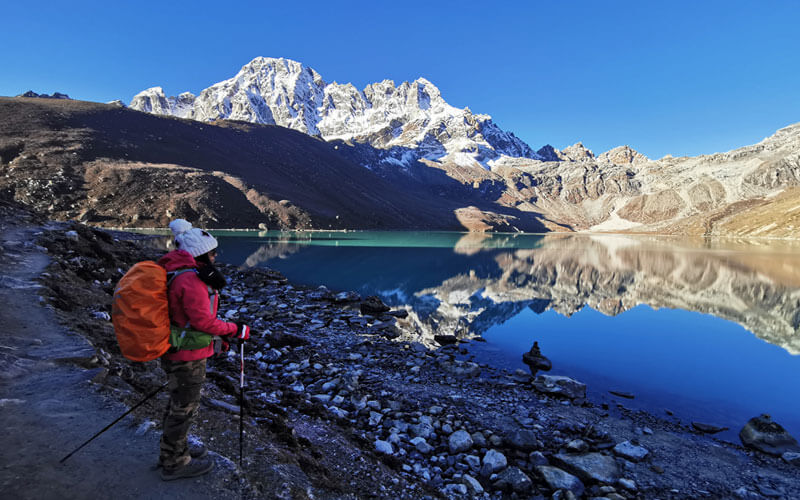
To take the Everest base camp trek, you need to consider working out at least a month prior before you start the trek. Working out does not mean going to the gym and lifting heavy weights! You need to do some light lifting and strengthen those legs and shoulders. Indulge yourself in exercises that build up your endurance and stamina. Well, that answers the question; any capable person in the sound physique can go on Everest Base Camp trekking.
Does it cost a fortune to go on Everest Base Camp Trek?

When you Google Everest base camp trek, chances are that you will see them start from $1000. The cost comprises of so many things that you might not utilize during the trek. Traveling solo means you can reduce the porter cost. There are additional charges of teahouses as well. Let me just say that Nepal is pretty cheap, and the cost of living is surprisingly low.
Yes, there are fancy restaurants and hotels, but they too fall under a small price bracket. Aside from the permit fees which are fixed, the other costs are variable and can be reduced. On average, you can survive on at least Rs.2200 a day. This price includes housing and food. Apart from any sort of contingencies, the average 15 days Everest base camp trek can be completed in Rs. 90,000 only. (The price of air tickets and housing facility in teahouses is not mentioned as they tend to fluctuate)
How can I cut costs further?
If you feel that you need to save yourself some bucks, then we have got some ideas that you may find helpful. Instead of buying mineral water bottles, go for water purification tablets. Mineral water in the Himalayas cost more than double as to what you will pay in the city. If you have occasional cravings of sugar and spice, then we suggest you carry your chocolates, as they cost a fortune here.
There is a huge problem of power shortage in these parts, and even charging your electronics may cost you extra bucks. Carry a power bank with you just in case. While in Nepal, you may have seen that there is a huge difference in price between vegetarian and non-vegetarian food. To save some bucks, you should opt for vegetarian food. These tips will help you to save quite a few bucks.
Do I need travel insurance to go on Everest Base Camp Trek alone?
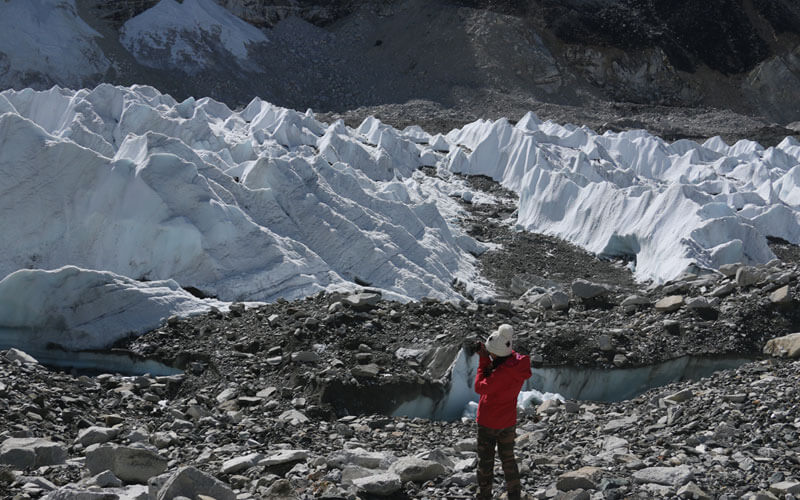
Although not compulsory, we advise you to get travel insurance pre-hand. There are many travel insurances companies out there so there won’t be trouble on that part. In case of any crisis like property loss, calamities, or emergency evacuation during the trek, travel insurance comes handy.
Organizing the permits
The most important document that you’ll need to trek anywhere in Nepal is a TIMS Card. It is an abridged version of the Trekkers’ Information Management System. This is mandatory for both individual and group trekkers. Individuals need to pay $20 for a green card whereas groups need to pay $10 for a blue card.
This trekking permits can be collected at the Nepal Tourism Board in Kathmandu. To get this permit, you’ll need a photocopy of your passport and passport-sized photos. Along with the permit, you will need an entry permit for Sagarmatha National Park. This permit can be arranged at the gateway of the Sagarmatha National Park in Monjo.
Trekking Itinerary
A typical Everest base camp trek lasts for at least 15 days, and it follows the following itinerary:
Day 01: Arrival in Kathmandu (1,350m/4,428ft).
Day 02: Kathmandu: Sightseeing and Trek Preparation.
Day 03: Fly to Lukla, trek to Phakding (2,651m/8,700ft).
Day 04: Phakding to Namche Bazar (3,438m/11,280 ft).
Day 05: Acclimatization Day - Namche Bazar.
Day 06: Namche Bazaar to Tengboche (3,870m/12,694ft)
Day 07: Tengboche to Dingboche (4,360 m/14,300 ft)
Day 08: Dingboche: Acclimatization.
Day 09: Dingboche to Lobuche (4,940 m/16,207 ft)
Day 10: Lobuche to Gorak Shep (5170 m/16,961ft), visit Everest Base Camp (5,364 m/17,594 ft)
Day 11: Gorak Shep to Kala Patthar (5,545m/18,192ft) to Pheriche (4,288m/14,070ft)
Day 12: Pheriche to Namche Bazaar (3,440m/11,280 ft)
Day 13: Namche Bazaar to Lukla (2,860m/9,186ft)
Day 14: Fly to Kathmandu
Day 15: Final departure
If you want to add a bit of adventure in the itinerary, then instead of flying to Lukla, you can start your trek from Jiri. This will add an extra 4 days in your itinerary. Or, you can add stunning Gokyo Lakes in the itinerary.
When should I take Everest Base Camp Trek alone?
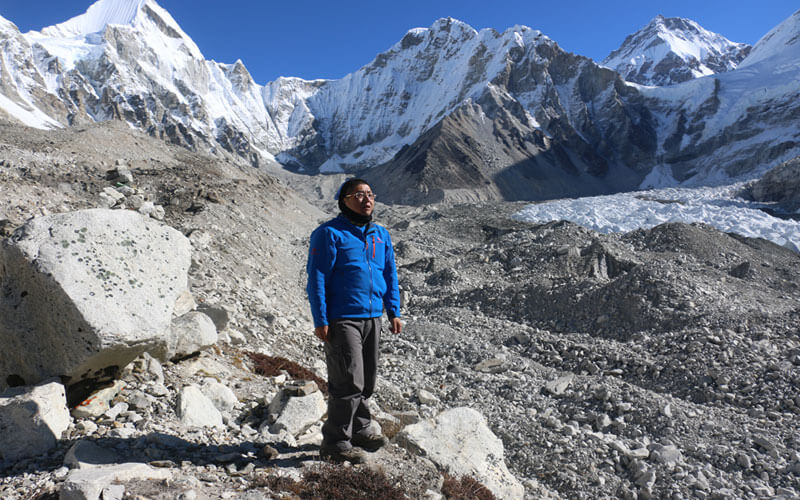
The most popular time to go on Everest Base Camp Trek is during the months from October to November. During this time, the weather is mostly pleasant, and the blue skies make the environment more appealing. The temperature is also just perfect, and you won’t find any tents on the base camp as the expeditions don’t start until May.
If you don’t like to trek in October, then you can choose to trek from April to the end of May. There is a lot of traffic during this time. The teahouses are also generally packed, and some of them will not provide accommodation unless you pay more than the actual price. Therefore, if you are thinking to go on EBC Trek during spring then make sure to book yourself room beforehand.
What should I pack during Everest Base Camp Trek alone?
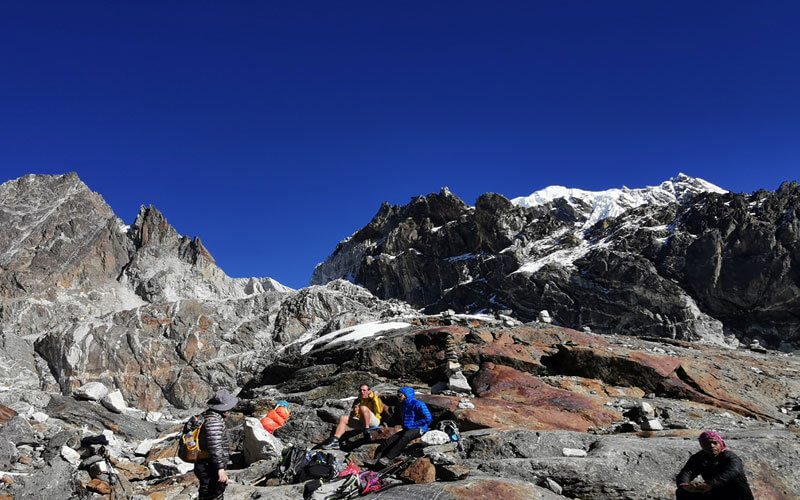
These are the minimum things that you need to carry Everest Base Camp Trek alone:
- Warm thermal layers to wear underneath your clothes
- Comfortable pair of clothes for the evening
- Windproof, rainproof, and dustproof jacket
- Pair of rain pants
- Comfortable and quality hiking shoes
- Hiking pants
- Pair of sunglasses (preferably polarized)
- Warm Sherpa hat
- Two pairs of gloves. One for snow and one for regular use
- 3 pairs of hiking socks
- At least 5 pairs of underwear
- Scarf or a neck warmer
- A sunscreen with a high SPF
- Deodorants, moisturizers, wet wipes, sanitary pads, and lip balm
- Camera, extra batteries, journal, book, snacks, bars
- Water purification tablets and reusable water bottle
- First aid kit
- Sleeping bag
- Trekking Pole
- Good quality & comfortable backpack with a good waist belt and comfortable straps
- Rain cover for backpack and other luggage that you might carry
- A money belt for cash, passport, and TIMS Card
Are there chances of altitude sickness during Everest Base Camp Trek?
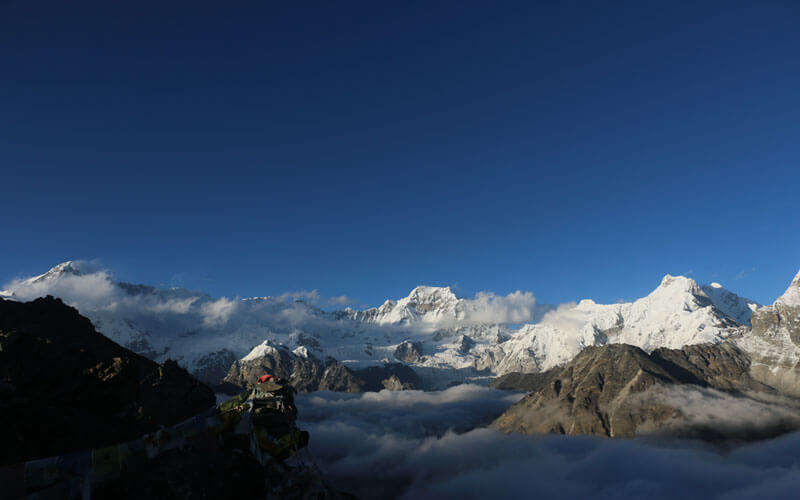
The Everest base camp trek takes place in the high Himalayas. The maximum elevation in these parts exceeds 5,000 meters at the vantage point in Kalapatthar. The trail sees an increase in elevation by at least 400 meters daily. Altitude sickness is a major killer in these parts. Its symptoms include shortness of breath, nausea, and vomiting. To prevent altitude sickness, you need to walk carefully and acclimatize properly. Also, drinking plenty of water can help to avoid Acute Mountain Sickness.
Things to know before trekking the Everest Base Camp
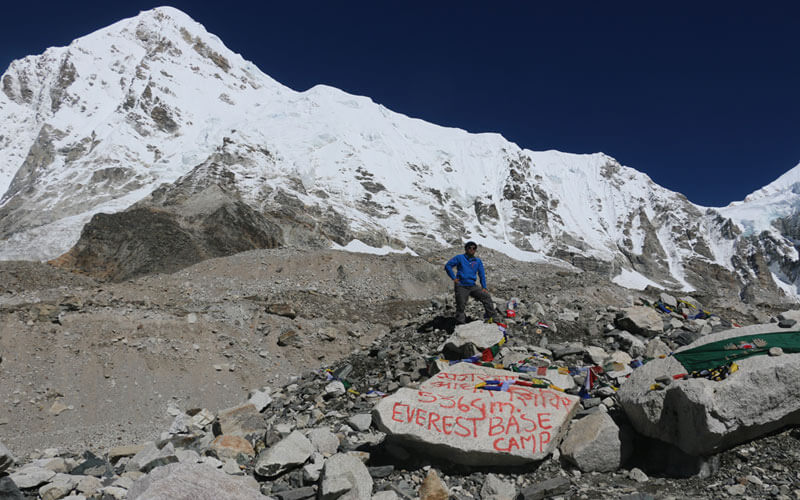
These are the things that an individual hiker should keep in mind before visiting the Everest base camp:
- As the Everest Base camp lies in an isolated region, you won’t find any modern-day commodities like cafes, pubs, and even ATM. It is recommended that you carry spare changes before heading out
- With the recent increase in tourism, you can find quality food there, but it comes at a high price plus some of them are not up to mark
- It is better to start your trek in the Himalayas as early as possible. As the clouds can block the sun away
- On the trail, you can see many yaks and donkeys. You should not mistreat them as they are considered important and holy






